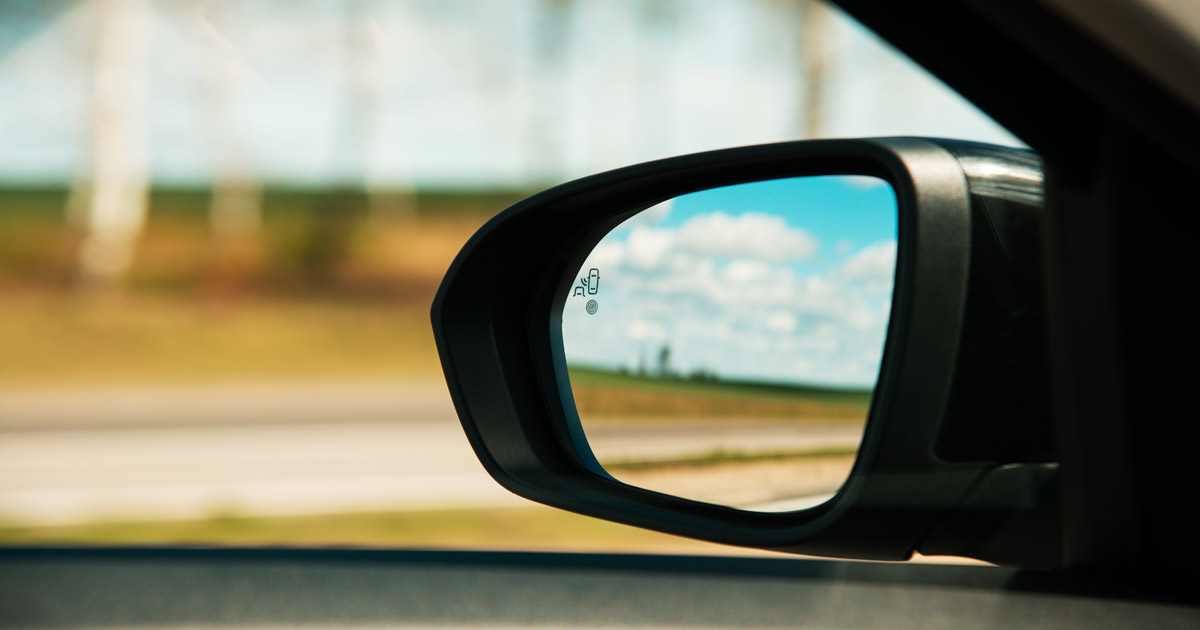Blind-spot warning (BSW) systems utilize a combination of cameras, radar, and sensors to allow a driver to better see cars, objects, or pedestrians in a vehicle’s blind spots. If the system detects a car or other obstacles, it sends a visual warning, such as an indicator light, through the outboard mirrors or front pillars to alert the driver. Some systems also offer video imaging on the dashboard screen allowing the driver to actually see blind spots they otherwise would not.
Some BSW systems also feature a warning function that activates when the driver turns on the turn signal and sounds an alarm or vibrates the steering wheel to alert the driver to another car in a blind spot.
In addition to this type, there is a second type: BSW with automatic emergency steering. This engages automatic steering and/or braking when the driver engages the turn signal for a lane change.
Costs for warning systems have lowered in recent years, and nearly all automakers include some version of BSW as a standard feature in their vehicles. Manufacturers such as Ford, Nissan, Toyota, Lexus, Audi, BMW, and Tesla are just a few automakers with standard BSWs in new model cars.
Do BSW Systems Prevent Accidents?
BSW systems can prevent car accidents when making lane changes, according to research, and have been shown to reducing the number of overall crashes. Research shows that BSWs can prevent drivers from crashing into another vehicle that is driving in the same directions in an adjacent lane.
BSW systems have been found to reduce the number of auto vehicle accidents. According to the Insurance Institute for Highway Safety, Highway Loss Data Institute, BSW systems have reduced overall lane-change collisions by 14 percent, resulting in approximately 25 percent less injuries.
Are There Any Drawbacks to BSW Systems?
There are many benefits to BSW systems, but there are a few known drawbacks, such as:
- Speed: Studies have shown that BSW systems are too slow or fail to detect fast-moving cars in adjacent lanes. Those that detect faster moving cars often fail to signal the driver in time. Some systems have limited ability to operate when the vehicle is at lower speeds. Maneuvers that combine these two limitations, such as merging onto a busy interstate, may not benefit from the BSW system at all.
- Lights: Typically, BSW warning lights are located in the vehicle’s side mirrors or windshield pillars. Those located on side mirrors are often small, making them difficult for some drivers to see, especially in brightly lit environments.
- Sound and vibration: Systems that sound an alarm or vibrate the steering wheel when the turn signals are engaged do not have drawbacks per se, however, they are useless for drivers who fail to signal.
- Weather: The BSW sensors are located in various places throughout the exterior of the vehicle to monitor the car’s surroundings. These sensors can fail due to buildup of snow, ice, or mud.
- Motorcycles: Along with fast-moving vehicles, BSW systems sometimes fail to detect motorcycles given their size difference with other automobiles. Those who speed and dart between lanes on a freeway may not be picked up by the warning system.
Whether BSW systems are worth purchasing depend on the driver’s needs and size of the vehicle. Drivers of vehicles with larger blind spots benefit the most from the system. Those who drive larger vehicles have larger windows and more visibility, particularly on freeways. However, these drivers may benefit the most from BSW systems when parking.
Mount Holly Car Accident Lawyer at the Law Office of David S. Rochman Represents Clients Injured in Blind-Spot Car Crashes
If you have been injured in a blind-spot car accident due to a negligent driver, our Mount Holly car accident lawyer at the Law Office of David S. Rochman can help. Call us at 856-751-2345 or contact us online for a free consultation. Located in Mount Laurel, New Jersey, we serve clients in Burlington County and the surrounding areas.


